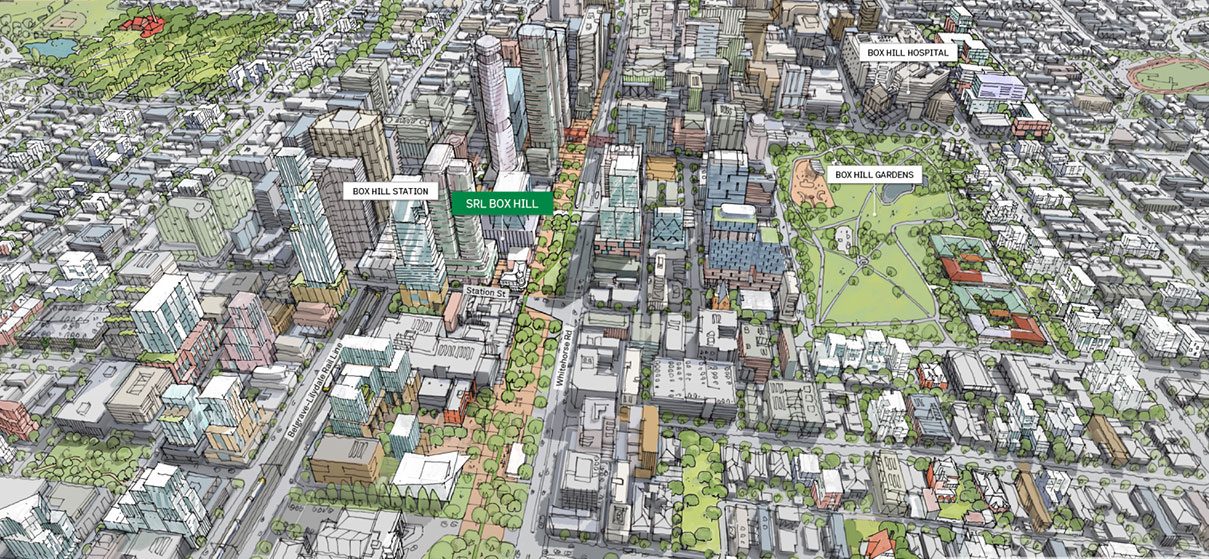This article is from the Australian Property Journal archive
Victoria’s Allan government has unveiled plans for housing around six Suburban Rail Loop (SRL) stations as well as the conversion of surplus government land and underused office buildings into thousands of new homes.
These projects aim to deliver more than 70,000 homes near transport, jobs, and services, while easing pressure on outer suburbs.
The draft plans involve the stations at Box Hill, Burwood, Glen Waverley, Monash, Clayton, and Cheltenham.
Premier Allan said building world-class public transport and affordable homes around it just makes sense.
“SRL is Australia’s largest housing project – it will help deliver 70,000 more homes exactly where they’re needed, right next door to jobs, services and public transport. SRL will also give more than 70,000 passengers time back in their day – getting thousands of cars off the road and getting people to work, school or home faster.
“This will take pressure off the outer suburbs and give young people a fairer shot at living near jobs and services,” she added.
The government is also unlocking surplus government land and repurposing underused office buildings to deliver hundreds of new homes.
Minister for planning Harriet Shing announced the rezoning of the former VicRoads headquarters in Kew, which could provide up to 500 homes, including a minimum 10% affordable housing component.
The mid-century office building on the site is being investigated for adaptive reuse, given its proximity to Kew Junction, one of 25 new ‘train and tram zone’ Activity Centres. Development Victoria will deliver a master plan for the site, with early works expected to begin in 2026.
A further six surplus government sites across Melbourne and regional Victoria have been identified for housing development, with the potential to deliver up to 350 homes. These sites include:
– Education land in Croydon South,
– Health residential land in Carlton,
– TAFE carpark land in Heidelberg West,
– Government land in Baxter,
– VicTrack land in Bendigo and Geelong
These latest developments follow a housing blitz last week where the government announced plans to drawn up boundaries for Geelong, Ballarat and Bendigo to ensure the 200,000 homes developed over the next 30 years.
The government revealed 25 activity centres near train stations and tram stops which will deliver 300,000 homes by 2051.
The first 10 pilot activity centres are expected to deliver 60,000 homes.
The government is also tackling planning delays by introducing a “townhouse code” that will see “automatic” approvals for duplexes, townhouses and low-rise apartments.
This comes after it warned local councils to meet housing targets or risk losing their planning powers.




